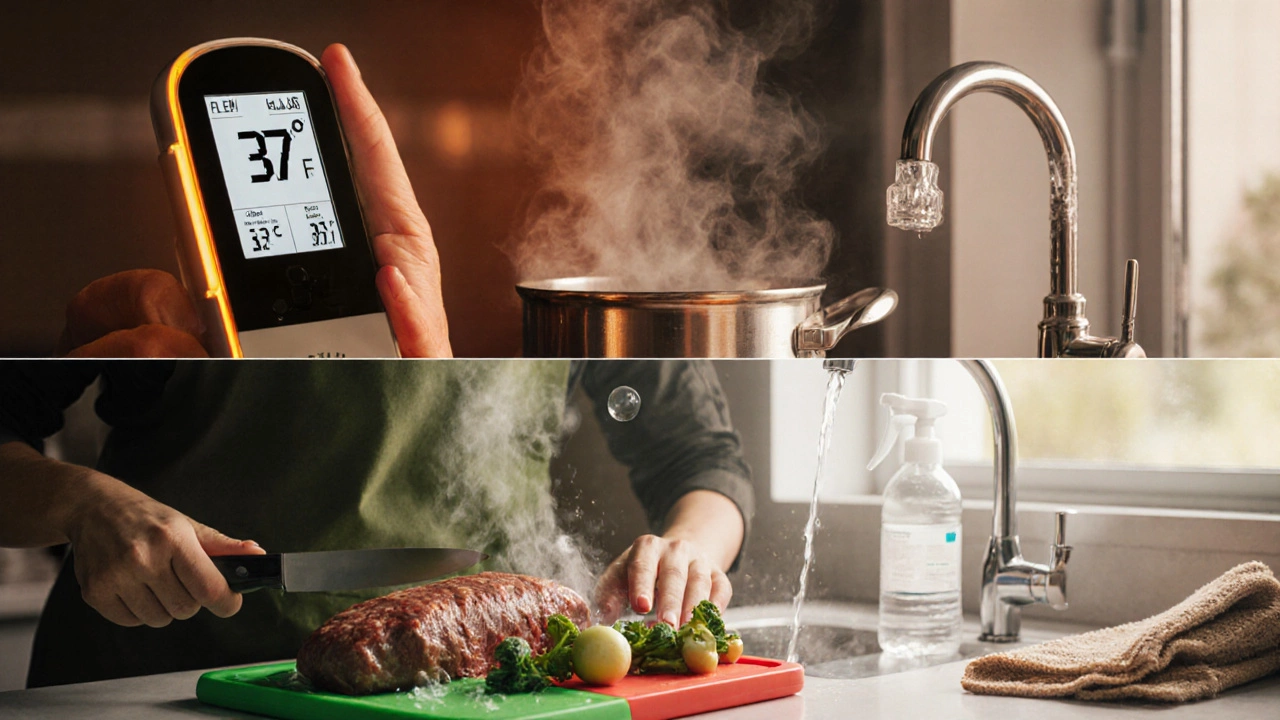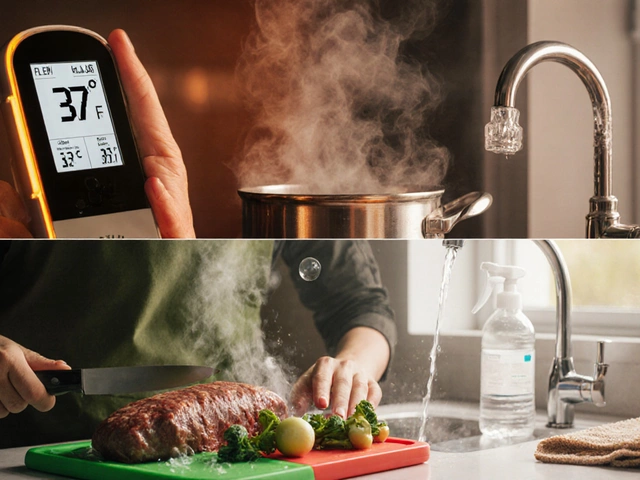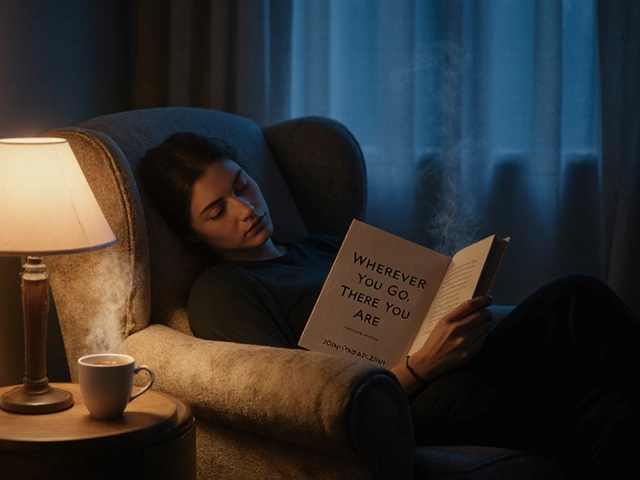Food Safety Temperature Checker
Food Safety Temperature Checker
Check if your food is in the safe temperature range for meal prep. Bacteria multiply rapidly between 40°F (4°C) and 140°F (60°C), known as the "danger zone."
Enter temperature and food type to check safety status
When it comes to safe meal prep, food preparation controls is a set of proven actions that keep what you cook from turning into a health hazard. Most home cooks think about recipes and taste, but the real secret to tasty, worry‑free meals lies in four simple controls: temperature, cross‑contamination, personal hygiene, and cleaning&sanitizing. Master these and you’ll cut the risk of foodborne illness dramatically, whether you’re whipping up a weekday stir‑fry or a weekend feast.
1. Temperature Control
Temperature control means keeping foods at safe hot or cold levels. Bacteria multiply fastest between 40°F (4°C) and 140°F (60°C), a range known as the "danger zone." If you leave cooked chicken out for more than two hours, you’re giving germs a free‑ride.
- Use a calibrated food thermometer for meat, poultry, fish, and egg dishes.
- Heat leftovers to at least 165°F (74°C) before serving.
- Store perishables in a fridge set to 37°F (3°C) or lower.
- Cool hot foods quickly: divide large batches into shallow containers and refrigerate within an hour.
Temperature control is the backbone of food safety standards worldwide, from home kitchens to industrial plants.
2. Cross‑Contamination Control
Cross‑contamination control stops raw juices, allergens, or bacteria from hopping onto ready‑to‑eat foods. A single slip-like using the same cutting board for raw chicken and salad-can spoil an entire meal.
- Designate separate cutting boards: one for raw meat, another for veggies and fruits.
- Color‑code knives and utensils (e.g., red for meat, green for produce).
- Never place cooked food back on a plate that held raw ingredients unless it’s been washed.
- Wash hands, surfaces, and tools with hot, soapy water after handling raw items.
Effective cross‑contamination control is a core principle of HACCP (Hazard Analysis Critical Control Points), the system most food manufacturers follow.
3. Personal Hygiene Practices
Personal hygiene is more than just looking clean-it’s about preventing germs from entering your food. Studies show that a single cough or sneeze can sprinkle thousands of bacteria onto a countertop.
- Wash hands with soap for at least 20 seconds before, during, and after food prep.
- Keep nails trimmed and avoid wearing jewelry that can trap food particles.
- If you’re sick, stay away from the kitchen or wear disposable gloves.
- Change aprons and towels regularly; they can become breeding grounds for microbes.
Good personal hygiene is the easiest, yet most overlooked, guard against foodborne illness.
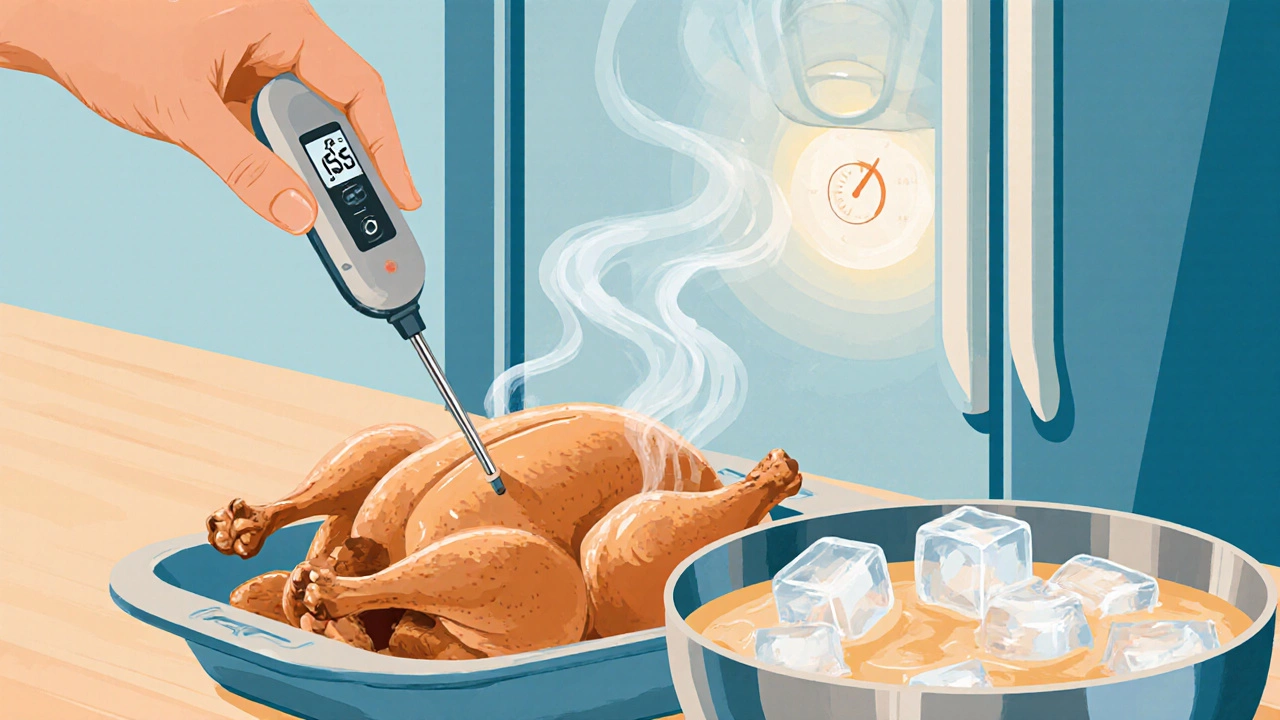
4. Cleaning & Sanitizing Control
Cleaning and sanitizing wipes away food residues, while sanitizing kills any lingering microbes. Without both steps, even a clean‑looking surface can harbor danger.
- Clean with hot, soapy water to remove visible debris.
- Sanitize using a solution of 1 tablespoon unscented bleach per gallon of water, or a commercial sanitizer approved for kitchen use.
- Let the surface air‑dry; wiping it dry can re‑introduce contaminants.
- Schedule deep cleans: mop floors, descale kettles, and clean the refrigerator’s drip pan weekly.
Following a strict cleaning & sanitizing routine meets the requirements of most local health codes and gives you peace of mind.
Practical Checklist for Every Meal Prep Session
Turn the four controls into a habit by using this quick checklist:
- Prep area ready? Sanitize surfaces, gather color‑coded tools, and set the fridge to the right temperature.
- Hand hygiene? Wash hands, dry with a paper towel, and wear gloves if needed.
- Raw vs. cooked? Keep raw items on separate boards, and never reuse plates without washing.
- Temperature check? Use a thermometer for meat, keep hot foods above 140°F, and chill leftovers within two hours.
- Final sweep? Wipe down counters, mop the floor, and store leftovers in airtight containers.
Ticking these boxes takes under five minutes but saves days of doctor visits.
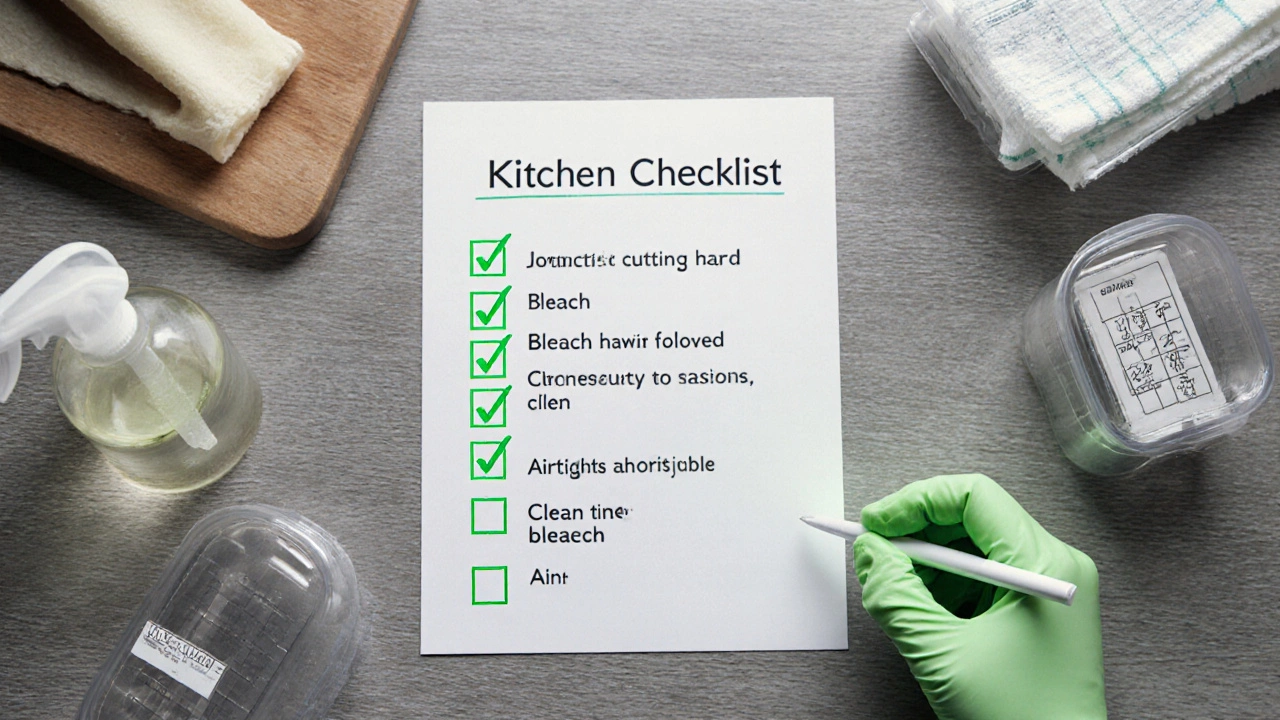
Common Mistakes and How to Fix Them
Even seasoned cooks slip up. Here are the top three errors and quick fixes:
- Leaving food out too long - Set a timer the moment you start cooking. When it rings, either serve or refrigerate.
- Using the same towel for hands and dishes - Keep a dedicated “hand towel” separate from dishcloths.
- Skipping the sanitizer step - If you only rinse with water, bacteria can survive. Keep a spray bottle of diluted bleach handy.
Fixing these habits instantly boosts the effectiveness of all four controls.
Frequently Asked Questions
What temperature is safe for storing leftovers?
Store leftovers at 40°F (4°C) or lower. Ideally, move them to the fridge within one hour of cooking and consume within three to four days.
Do I need a food thermometer for home cooking?
Yes. A cheap digital probe costs under $20 and gives you confidence that meat, poultry, and eggs have reached safe internal temperatures.
How often should I sanitize my cutting boards?
After each use. Spray the board with a bleach solution, let sit for a minute, then rinse and air‑dry.
Can I use the same knife for raw meat and vegetables?
Avoid it. Either clean the knife thoroughly between tasks or keep separate knives to eliminate cross‑contamination.
What’s the quickest way to cool a big pot of soup?
Divide the soup into shallow containers and place them in an ice‑water bath. Stir occasionally; the soup should drop below 70°F (21°C) within an hour.
Apply the four controls, use the checklist, and you’ll turn every meal into a safe, delicious experience.
